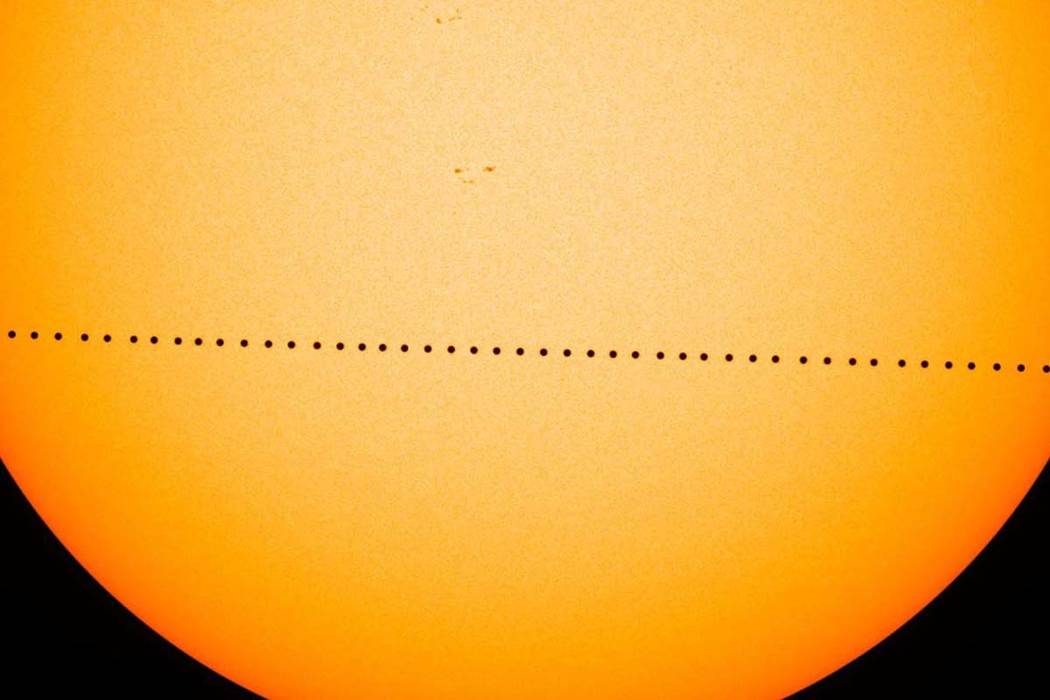Mercury will brighten the morning as it makes rare pass across sun
CSN plans free viewing parties on Monday morning for a rare celestial event that won’t happen again for 13 years.
Mercury — the solar system’s smallest, innermost planet — will be in transit, resembling a tiny black dot as it passes directly between Earth and the sun. The roughly 5½-hour show in the sky will start about 4:35 a.m. Unlike its May 2016 transit, Mercury will score a near bull’s-eye this time, passing practically dead-center in front of our star.
Weather-permitting, it will be visible in the eastern U.S. and Canada and all Central and South America. The rest of North America, Europe and Africa should be able to catch part of the action.
CSN’s viewing party starts 7 a.m. Monday, as the sun rises above the eastern mountains of the Las Vegas Valley, in the parking lot of the CSN Planetarium at the Cheyenne campus in North Las Vegas, 3200 E. Cheyenne Ave. Telescopes with safety filters will be provided.
The Henderson campus, at 700 College Drive, will host a similar event from 8 to 10 a.m. in the parking lot on the east side of Building C.
According to NASA solar astrophysicist Alex Young, there’s no harm in pulling out the eclipse glasses from the total solar eclipse across the U.S. two years ago, but it would take “exceptional vision” to spot minuscule Mercury, which is 3,000 miles in diameter compared with the sun’s 864,000 miles.
Mercury’s next transit isn’t until 2032, and North America won’t get another viewing opportunity until 2049. Earth gets treated to just 13 or 14 Mercury transits a century.
Contact Rio Lacanlale at rlacanlale@reviewjournal.com or 702-383-0381. Follow @riolacanlale on Twitter. The Associated Press contributed to this report.
















